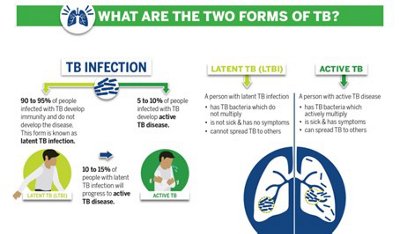Tuberculosis Management Four Years After COVID-19 Crisis
By the bioMérieux Editors | Reading time: 2 min
PUBLICATION DATE: MARCH 21, 2024
Tuberculosis (TB) fatalities continue to rise. In 2022, an estimated 10.6 million people fell ill with TB, compared to 10.3 million in 2021 and 10 million in 2020. The infectious disease killed 1.3 million people worldwide each year. In 2022, TB remained the second leading cause of death from an infectious disease, after COVID-19, and caused almost twice as many deaths as HIV/AIDS.
COVID 19-related disruptions are estimated to have resulted in almost half a million excess deaths from TB in three years, from 2020 through 2022, compared with the number that would have occurred if pre-pandemic trends had been maintained. (2)

Human, financial, and other resources have been reallocated from TB to the COVID-19 response. During the pandemic, this reallocation of resources added new layers of complexity to existing TB challenges, interrupting health services, reducing screening and impacting vulnerable populations which increased existing health disparities.
There was a major global recovery in the number of people diagnosed with TB and treated in 2022, after two years of COVID 19-related disruptions. This has started to reverse or moderate the damaging impact of the pandemic on the number of people dying from or being treated for TB. However, TB remained the world’s second leading cause of death from a single infectious agent in 2022, after COVID-19, and global TB targets have either been missed or remain off track.
“The more you leave undiagnosed and untreated, the more you will have next year and the year after,” said Dr. Lucica Ditiu in an August 2020 New York Times article. Dr. Ditiu is the Executive Director the Stop TB Partnership, an international consortium of 1,700 groups fighting the disease.
COVID-19 crises made people look for solutions to treat other diseases. 108 countries have expanded their use of digital technologies and are encouraging home-based treatments. There have also been strides in guaranteeing supplies of drugs and diagnostic tests. Additionally, some measures for COVID-19 management can be beneficial for managing TB as well, such as basic infection control practices and patient triage.

Importance of Diagnosing Latent TB
The diagnosis of latent TB enables healthcare providers to implement timely and targeted interventions. Detecting latent TB in individuals at risk is a critical step in preventing the progression to active TB – a more severe and contagious form of the disease. By identifying latent TB, healthcare professionals can initiate appropriate preventive treatments, such as the administration of latent TB medications, thereby reducing the likelihood of the infection becoming active. In essence, diagnosing latent TB is an integral component of patient care, aligning with global efforts to control and ultimately eliminate the burden of TB worldwide.
It's estimated that the diagnosis and treatment of TB has saved 75 million lives since 2000.
On World TB Day, let’s remember that there are many infectious diseases that take an enormous toll on global health every year. It is crucial that we maintain resource allocation for the prevention and treatment of these diseases, including tuberculosis, and continue to promote awareness of this deadly disease.
YOU MAY BE INTERESTED IN THESE ARTICLES
SHARE THIS ARTICLE:
- Infectious Diseases


